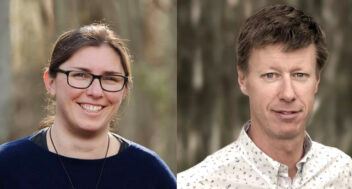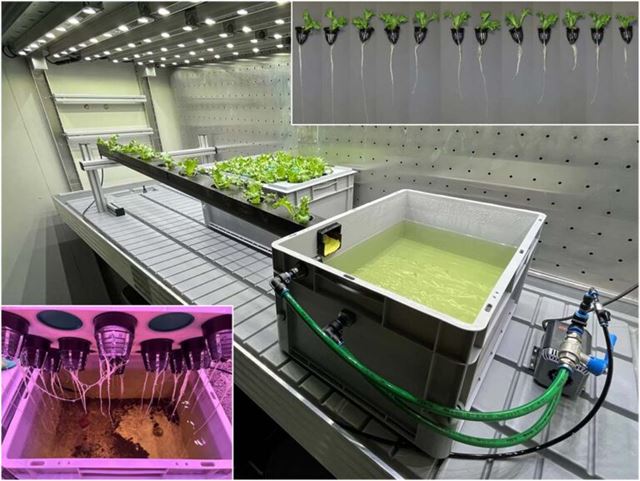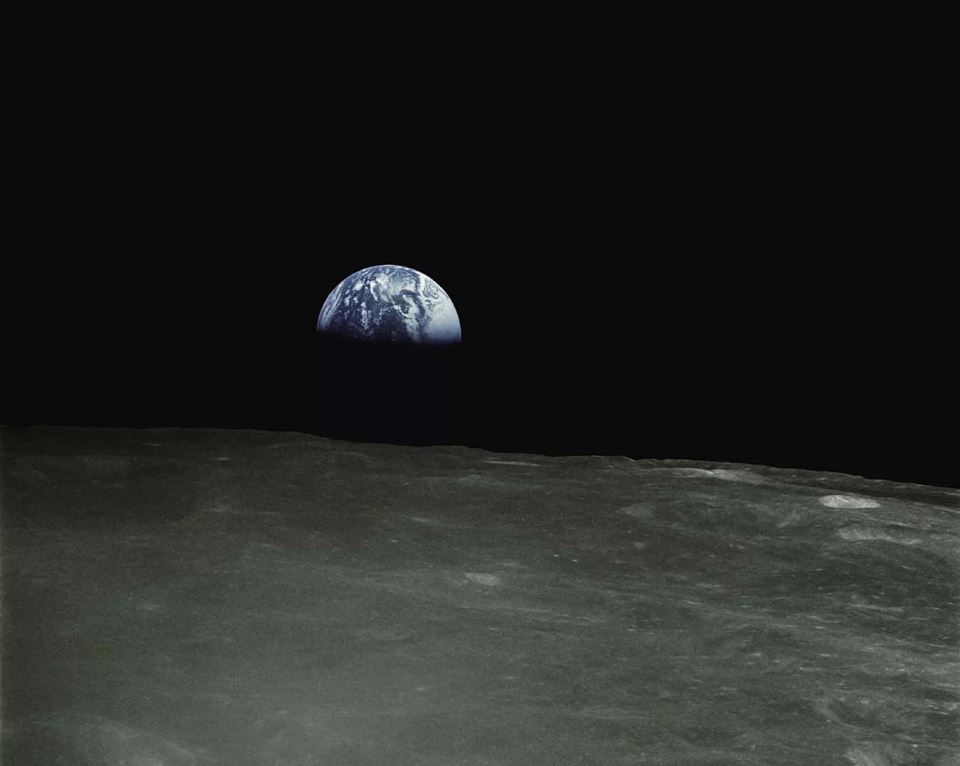No humans have been on the moon since December 1972. Researchers in Trondheim are now contributing to new lunar missions and the future exploration of Mars.
In order to go on longer journeys into space, astronauts must grow their own food while on the trip. Helping to make this possible is a key element in the Centre for Interdisciplinary Research in Space (CIRiS)’s core activities.
Over the last couple of years, NTNU Social Research has been helping the European Space Agency with an important step in the Mars dream: growing plants on the moon in greenhouses.
- You might also like: Cultivating salad plants that can be grown on the moon
Greenhouses made of regolith
In the greenhouse project, the idea is that astronauts will use regolith (moon dust), of which there is a plentiful supply on the surface of the moon, to build greenhouses on the moon – a place completely void of liquid water, with no wind, powerful radiation, and enormous differences between day and night temperatures. Last but certainly not least, one of the biggest challenges is something that most people are aware of from seeing the few images that exist from previous lunar landings: there isn’t any gravity.

This is approximately how the production of crop-friendly greenhouses could look on the moon. LER production at the bottom left, Sulfur box production at the bottom right. Illustration: Sophie Labonnote-Weber
This ‘moon dust’ is also found on Earth. Regolith is a common term for unconsolidated rock and dust, such as humus, clay and sand that lie on top of bedrock. However, the regolith found on Earth is structured slightly differently to the regolith on the moon.

Sophie Labonnote-Weber and Øyvind Mejdell Jakobsen. Photo: NTNU Social Research AS
It is not possible for astronauts to transport much material with them from Earth to build greenhouses on the moon. So, how are they going to construct greenhouses from the materials found on the moon?
Bringing in more expertise
Project Manager Sophie Labonnote-Weber and Senior Researcher Øyvind Mejdell Jakobsen, both from NTNU Social Research, received help from SINTEF, an organisation that knows a lot about construction and material properties.
Harald Justnes and Tobias Danner from SINTEF Community are both experts in construction materials. They joined forces with Johan Fahlstrøm and Olav Åsebø Berg from SINTEF Manufacturing, who know a lot about automated production techniques.
Researchers have previously managed to make a substitute material that is very similar to regolith.
In order to conduct further research on this material, the SINTEF researchers used 3D-printed concrete made from the substitute material they developed. However, after assessing the material’s properties and the conditions on the moon, they found that it was not the best solution.

Harald Justnes and Tobias Danner. Photo: SINTEF
Similar to Leca balls
According to the researchers, it is not possible to use a water-based system in the vacuum that exists on the moon, unless you are inside a pressurised room.
Instead, they chose a new concept based on how expanded clay balls are produced. It uses the same principle as Leca balls, only in a different form. This concept requires only a small amount of a carbon source from the soil, because the reaction between carbon and the iron oxide in the regolith will form a CO2/CO gas that will expand the regolith when heated to a plastic phase close to melting point.
And what type of carbon source did they choose? Sugar, of all things.
Astronauts must build blocks of expanded regolith
The regolith found on the moon contains quite a lot of iron oxide. If the astronauts add a small amount of carbon (in this case sugar) and then heat it up to approximately 1200 degrees Celsius, they can make the material expand. The material then becomes more thermally insulating and lighter.
This temperature can be achieved on the moon using concentrated sunlight or electric ovens with batteries charged by solar panels.
The SINTEF researchers have successfully demonstrated this and called the new product LER (lightweight expanded regolith).
The idea behind the project is to extract regolith, the raw material found in abundance on the moon, and then create blocks that can be stacked on top of each other to form a type of dome-shaped structure, not unlike how we lay bricks here on Earth.
So far so good. The greenhouse itself can be built, but inside, advanced plant production must take place.
- You might also like: Ground-breaking astronaut glove for exploring the Moon and Mars
Greenhouses must be built on the moon’s poles
This is where CIRiS’ expertise plays a role.
How will astronauts be able to grow plants inside these greenhouses in a place where there is no soil and no water?
Fortunately, researchers have established that there is ice on the poles of the moon that can be used both as drinking water and for plant cultivation. The construction of these greenhouses must therefore take place on one of the moon’s poles.
In addition, after building the greenhouses, the astronauts must make suitable boxes for plant cultivation, which have to be waterproof.
“There is not a lot of sulphur on the moon, but if the astronauts are able to extract it, there will be enough to make waterproof cultivation boxes. Sulphur has a low melting point (120 degrees Celsius) and can be applied to the LER product in liquid form before it solidifies. It then forms a waterproof coating,” explain Justnes and Danner.
Like window-sill gardening
With the help of SINTEF’s preparatory work and the LER material samples, Labonnote-Weber and Mejdell Jakobsen were able to continue their experimentation.
In specially designed boxes, they used a type of hydroponic cultivation, not unlike the method many people use when growing different herbs in their kitchens.
Hydroponic cultivation is plant cultivation without the use of soil.
“We cultivated a type of lettuce that was exposed to the lightweight expanded regolith to see if it would affect the lettuce’s growth,” says Labonnote-Weber.

This is what it looked like in the lab when the researchers examined the viability of plants in sulfur-coated containers. At the bottom left, the lettuce is exposed to the LER material, in the large container there is sulfur exposure, and at the top right are lettuce samples. Photo: NTNU Social Research
They have also assessed what it will be like to only eat self-grown plants over lengthy periods of time.
The researchers at NTNU Social Research have also assessed functionality, durability and how easily the small material samples can be transferred to a full-scale model on the moon. The answer to the ESA is that everything looks promising and possible to implement.
The ‘Farming’ project has been ongoing for two years, and the ESA granted the project NOK 1.7 million in funding. The project findings have now been compiled in a report that has been submitted to the ESA.
Don’t forget sustainability for us down here
NTNU Social Research’s ambition is crystal clear: They want the research on manned space travel not only to contribute to new space missions, both to the moon and Mars, but also to drive innovation here on Earth. Especially when it comes to sustainability.
“The global population is increasing all the time, and we need to eat more plant-based food. We have to produce it ourselves. Knowing the most efficient ways to grow plants will be useful knowledge in the future. What we have done here is easily transferable to the conditions on Earth,” says Labonnote-Weber.
NTNU Social Research and CIRiS
CIRiS (the Centre for Interdisciplinary Research in Space) is a department at NTNU Social Research AS
CIRiS works with research and development for manned spaceflight. After more than ten years of biology research and development in microgravity and remote operations on board the International Space Station (ISS) in space, CIRiS now has its eyes on the moon as well.
CIRiS is an active partner in several research and development projects throughout Europe. CIRiS's work in the space sector also means a lot for other industries, including agriculture, aquaculture and other industries.



